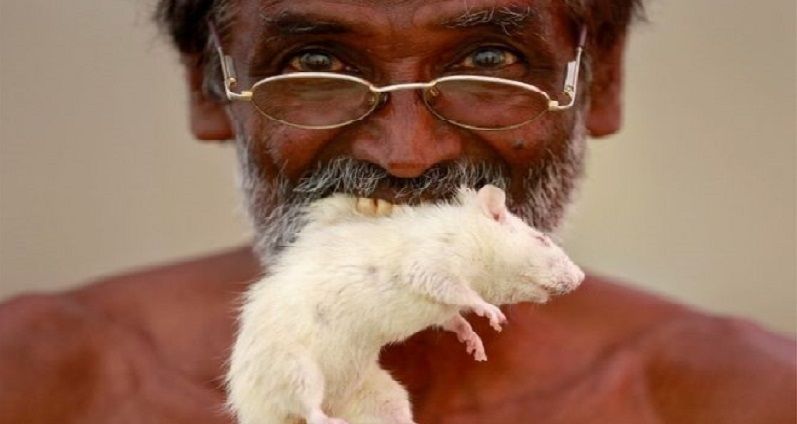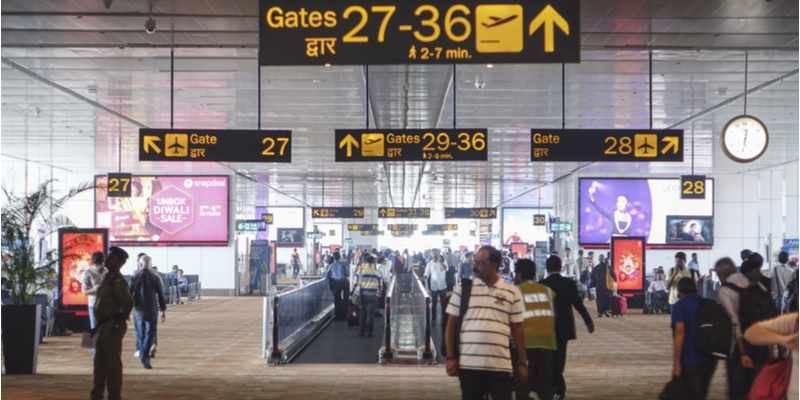Income fail, demonetisation, climate change—why Indian farmers are in despair
The plight of farmers in India took the spotlight when farmers from the drought-affected districts of Tamil Nadu, one of India's most developed states, sat in shoddy tents and ate food off the road. With a genuine plea for drought-relief funds, pensions for elderly farmers, a waiver on the repayment of crop and farm loans, better prices for their crops, and the interlinking of rivers to irrigate their lands, the country's farmers have a sad tale to tell.

According to a report by IANS, shortage of cash because of demonetisation, income fall, and climate degradation has led the backbone of the Indian economy to this stage. These are the three factors agitating Indians who depend on farming for their livelihood—90 million families, or 54.6 percent of country's 1.2 billion people.
As anger sweeps rural Madhya Pradesh after the death of six farmers in police firing, farmers' protests sweep across rural Maharashtra too—wholesale markets are shut, produce is being dumped on streets—and governments of the debt-ridden states struggle to respond to demands for loan waivers. An IndiaSpend analysis and reportage from rural Maharashtra explores why farmers are both angry and desperate, adds the report.
The primary reason farming is unviable is that farms here are now among the world's smallest (the global average land-holding size is 5.5 hectares). Since 1951, the per capita availability of land has declined by 70 percent, from 0.5 hectares to 0.15 hectares in 2011, and is likely to decline further, according to Ministry of Agriculture data.
Such "small and marginal land holdings," as they are called, now constitute 85 percent of the number of operational farms in the country and have little access to credit. Those are the larger issues. Here are the three reasons for the current turmoil:
1. Back-to-back droughts and drops in income
As 2017 rolled in, news from farms appeared good. After droughts in 2014 and 2015, a good monsoon in 2016 reversed two years of rural economic decline. Agricultural growth, which contracted 0.2 percent in 2014-15 and grew no more than 1.2 percent in 2015-16, rose by 4.1 percent in 2016-17.
Across many states growing pulses, such as Maharashtra, Karnataka, Telangana, and Gujarat, markets were flooded with produce, especially tur (pigeon pea), which witnessed the highest growth among all pulses. India is the world's largest producer of pulses. However, an influx of pulses from Myanmar, Tanzania, Mozambique, and Malawi—growing 20 percent over two financial quarters, from September 2016 to March 2017—caused the price of Indian tur to plunge.
From Rs 11,000 per quintal (December 2015), the price of tur fell 63 percent to Rs 3,800-4,000 per quintal—20 percent below the minimum support price (MSP) of Rs 5,050 per quintal (including a bonus of Rs 425). Production of pulses rose 29 percent, from 17.15 million tonnes in 2014-15 to 22.14 million tonnes in 2016-17. Tur production increased 50 percent, from 2.81 million tonnes to 4.23 million tonnes, over the same period.
2. Demonetization surprise on 9th Nov
On May 18, 30-year-old Prashant Lande waited under a harsh summer sun to sell 800 quintals of tur at the Amravati agricultural produce market committee (APMC). Lande said he refuses to sell his tur to the government procurement centre, although the state buys tur at a higher rate. At the market, Lande could sell his tur at Rs 3,800 to Rs 4,000 per quintal, while the government buying centre offered Rs 5,050 per quintal.
We don't sell to the government centre because the process of selling takes one month -- from standing in line for the token to the sale to finally when the payment reaches the account. Our fellow farmers who have sold their produce at the procurement centre on March 22, are yet to receive their payments and it is nearly June!
It does not help that the effects of demonetisation continue to be felt across the rural economy. Right after demonetisation, tomato farmers in Karnataka and Tamil Nadu, and onion farmers in Maharashtra and Gujarat were the worst hit as prices fell by 60-85 percent. With little respite more than six months later, the experiment has aggravated the circumstances leading to the current farmers' strike.
Up to 57 percent of farm families in Maharashtra are indebted; the figure for India is 52 percent, according to the National Sample Survey Organisation's 2013 situation assessment survey of farm households, the latest available data. This indebtedness has widespread consequences. More farmers committed suicide in Maharashtra (4,291) in 2015 than any other state, rising seven percent from 4,004 in 2014, followed by Karnataka (1,569) and Telangana (1,400). Now, after Uttar Pradesh's new government waived Rs 30,792 crore of farm loans, the pressure is building on the governments of Maharashtra, Madhya Pradesh, Tamil Nadu and Karnataka to do the same.
3. In an era of climate change, 52 percent of farmers are without irrigation
The basic agricultural problem is that despite the spread of irrigation—a sector plagued by unfinished projects and corruption—52 percent of farms still depend on the vagaries of rain, which is becoming increasingly uncertain in an era of climate change. Extreme rainfall events in central India, the core of the monsoon system, are increasing and moderate rainfall is decreasing.
The droughts of 2014 and 2015 in rural Maharashtra were mitigated by the plentiful rains of 2016, but many parts of the state also endured floods. On July 1, 2015, Prime Minister Narendra Modi launched the Prime Minister's Farmer's Irrigation Programme, with a budget of Rs 50,000 crore over five years. In 2015-16, less than a third (Rs 312 crore) of Rs 1,000 crore set aside for micro-irrigation was released, reveals a government report. Of this, up to April 2016, no more than Rs 48.3 crore, or less than five percent, was actually spent, according to a micro-irrigation financial progress monitoring report. The government set Rs 1,763 as the 2016-17 micro-irrigation target, but no data on results have been released. The micro-irrigation programme covers an area of 6,51,220 hectares, or 0.46 percent of net cultivated area.
With a curfew in force in Mandsaur, Madhya Pradesh, farmers refuse to end their on-going protest, till the government intervenes, adds a BBC report.
Do you have an interesting story to share? Please write to us at [email protected]. To stay updated with more positive news, please connect with us on Facebook and Twitter.











